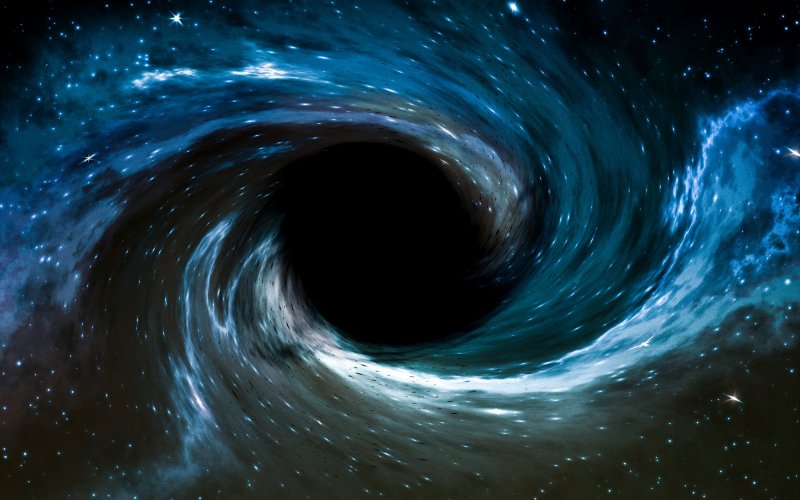To understand what a black hole is, we first need to think about gravity. Gravity describes the force between two bodies, the magnitude of which depends on the mass of both bodies and the distance between them.
We can determine the value of the force of gravity from Newton’s law of gravity, from which we can also determine the value of the gravitational field intensity around each body. We all know from experience that if we throw something, it falls back to Earth, and the faster we throw it, the longer it takes for the thrown object to fall back to Earth. One might expect that if we throw something very fast, it will not fall back to Earth. This expectation is justified, as evidenced by various satellites and space stations orbiting the Earth. The speed at which we must throw such objects is called the first cosmic velocity or orbital velocity, and its value is almost 8 km/s (at the Earth’s surface; the higher we are, the slower we need to throw). An object thrown at first cosmic velocity will orbit the Earth. If we want the object to leave the Earth’s gravitational field, we will have to throw it even faster — at second cosmic velocity or escape velocity (which is just over 11 km/s).
The values of the first and second cosmic velocities depend on the mass of the Earth and its radius. For each planet, there are different velocities at which we must throw a body in order for it to orbit around it (first cosmic velocity) or fly away from it (second cosmic velocity). As early as the 18th century, J. Mitchell wondered whether there could be a planet whose escape velocity (i.e., second cosmic velocity) was greater than the speed of light. He thus predicted black holes—or, as he called them, black planets, planets whose gravitational field is so strong that even light cannot escape from it. And if light cannot escape from them, they will appear black to observers.
Want to ask something?
Send us an e-mail with the subject “Physics mysteries” to the address:
We can't wait to tackle your interesting questions!





